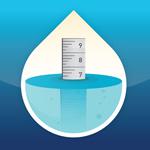National Water Week 2012: Valuing our water
22 October 2012
Fresh water is fundamental to human life. We use it for drinking and bathing, growing food, and manufacturing a multitude of products. It is crucial for a healthy environment. Australia's iconic weather and climate extremes—its droughts and flooding rains—lead to times of scarcity and great excess.
The Bureau of Meteorology has, during its 100 years of operation, developed expertise and built infrastructure to monitor and forecast Australia's weather and oceans. Over the past five years that expertise has been harnessed to do the same for the nation's fresh water reserves.
One of the first steps for the Bureau, following proclamation of the Water Act 2007, was to work with more than 200 government agencies which already collect water information at more than 100,000 sites. A common water information data transfer language was developed and data is now transmitted to the Bureau.

Lake Eildon, Victoria. Photograph by Alison Pouliot.
Water information
With cooperative arrangements in place and data flowing, the Bureau is developing a range of reports and forecasts on water storages, water availability and floods.
We produce an annual National Water Account, and regular Australian Water Resources Assessments. We're also working to develop new standards and programs, such as the Australian Water Accounting Standards, to improve the reporting of water availability and use, and seasonal stream-flow forecasts.
What does the water data tell us?
Water information data is helping Australians answer questions such as:
- What were the changes in water inflows, outflows and storages?
- What water access entitlements existed?
- What water management plans applied to govern water access?
- How much water was allocated for use during the reporting period?
- How much of the total water entitlement was traded?
- How much water was abstracted for use?
- How much water was made available to the environment?


Comment. Tell us what you think of this article.
Share. Tell others.